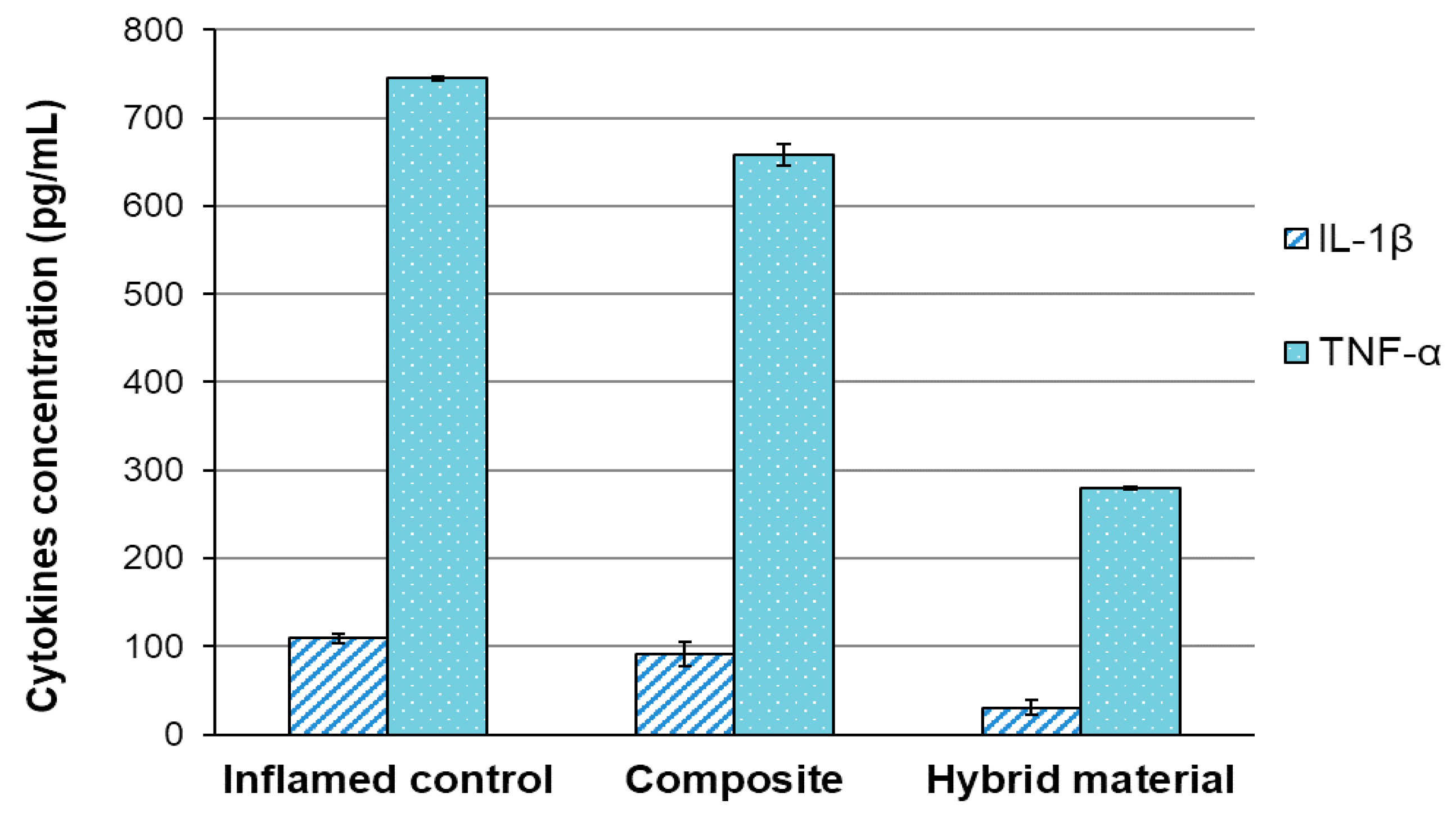Anti-Inflammatory Activity of Biomaterials Intended for Periodontal Disease Treatment †
Acknowledgments
References
- Hoare, A.; Soto, C.; Rojas-Celis, V.; Bravo, D. Chronic inflammation as a link between periodontitis and carcinogenesis. Mediat. Inflamm. 2019, 2019, 1029857. [Google Scholar] [CrossRef]
- Kaur, S.; White, S.; Bartold, P.M. Periodontal disease and rheumatoid arthritis: A systematic review. J. Dent. Res. 2013, 92, 399–408. [Google Scholar] [CrossRef]
- Craciunescu, O.; Gaspar-Pintiliescu, A.; Seciu, A.M.; Moldovan, L.; Zarnescu, O. Structure and cytocompatibility of a porous biomimetic material for oral tissue wound healing. Phys. Status Solidi A 2019, 216, 1800638. [Google Scholar] [CrossRef]
- Parnsamut, C.; Brimson, S. Effects of silver nanoparticles and gold nanoparticles on IL-2, IL-6, and TNF-a production via MAPK pathway in leukemic cell lines. Genet. Mol. Res. 2015, 14, 3650–3668. [Google Scholar] [CrossRef]

© 2019 by the authors. Licensee MDPI, Basel, Switzerland. This article is an open access article distributed under the terms and conditions of the Creative Commons Attribution (CC BY) license (http://creativecommons.org/licenses/by/4.0/).
Share and Cite
Seciu, A.-M.; Craciunescu, O.; Stan, L.; Zarnescu, O. Anti-Inflammatory Activity of Biomaterials Intended for Periodontal Disease Treatment. Proceedings 2019, 29, 66. https://doi.org/10.3390/proceedings2019029066
Seciu A-M, Craciunescu O, Stan L, Zarnescu O. Anti-Inflammatory Activity of Biomaterials Intended for Periodontal Disease Treatment. Proceedings. 2019; 29(1):66. https://doi.org/10.3390/proceedings2019029066
Chicago/Turabian StyleSeciu, Ana-Maria, Oana Craciunescu, Ligia Stan, and Otilia Zarnescu. 2019. "Anti-Inflammatory Activity of Biomaterials Intended for Periodontal Disease Treatment" Proceedings 29, no. 1: 66. https://doi.org/10.3390/proceedings2019029066




